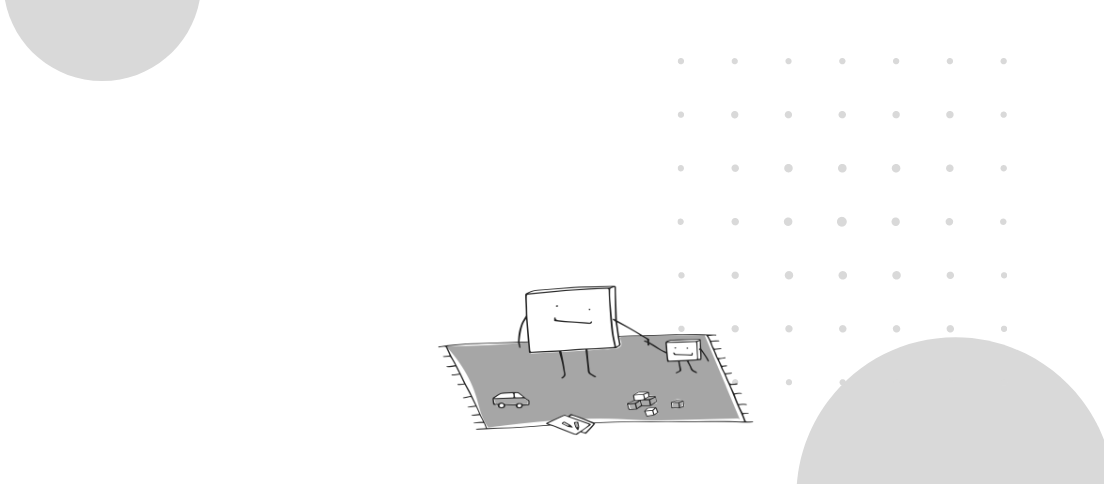A seasoned designer reflects on her self-taught design journey and jots down some tips handy for beginners
If I can call it that, my love story started in the early days of my childhood, most of which I spent in Jamshedpur, the “city of steel”, located in the Indian state of Jharkhand. During summer vacations, my mom and dad would occasionally take me to their workplace and it was there that I saw him for the first time.
I gradually learnt that he was a man of multiple languages and I wanted to learn them all, just so I could speak with him. Much to my pleasant surprise, he not only joined my school but my very class! I would try to be in his league and in time became good friends with him. We would spend entire days at length in each other’s company, together. It was so magical and fascinating, everything seemed so effortless.
I had fallen in love with the computer.
I still remember, our computer exams used to be three hours long and my entire class would be out in an hour except me. I would sit there the entire time, adding tons of sample codes to my answers, simply enjoying each minute of the exam. My teachers too saw my interest and got me enrolled in advanced computer classes way beyond our syllabus.
It was a clear hint that this was the way to go.
Later for my academics, I chose to solder ICs and circuits, coded microprocessors and learnt more programming languages. I was having the time of my life!
But it wasn’t until my first job that I learned about the existence of UI/UX. Our visionary mentor under whom we were working would have us spend thirty minutes each day to learn something new. It was during one of these half-hour slots that I stumbled upon the term User Experience. Both UX and those half-hour slots have stayed with me since.
I then found my way to the best UI/UX studio in the country, where I got to work with a bunch of amazing designers. Initially, it was too overwhelming. But eventually I settled in this industry and got opportunities to work with leading brands in domains like BFSI, Entertainment, ERP, Data Science and Automobile. Even after spending years, every day would offer a new level of excitement and energy.
Why did I want to tell you all of that? Because I didn’t decide to be a designer the day I was born or the day I fell in love with the computer. All I did was pick hints from my life that paved way for the rest of my journey.
Today, having spent more than a decade as a designer in the industry, what I have are a few lessons (or maybe questions!) that I learnt along the way. Putting them together would probably come in handy to muddle through this magnificent world of UI/UX.
Doing it for the first time?
I had never been to a design school or learnt about the UX processes formally. Those were the times when UX was new and there was barely any content on the internet. So whatever little I could find, I devoured it. My only piece of advice here would be to not hesitate in calling things out. Tell yourself and the people around you that you are doing this for the first time. It is okay to be judged with your own story rather than be presumed by other people.
Overwhelmed by buzzwords?
At times, I’ve had awkward situations where the buzzwords turned out to be entirely different from what I thought they meant. However, the good thing about the design world is that it is too subjective. What seems wrong to you might not actually be wrong. It could be right from a different perspective or in a different light. In the end, buzzwords are just that – ‘buzz’ words. As designers we keep stumbling upon new stuff every now and then. It is up to us, as part of the industry, what we want to name them. Next time, you hear a new word from someone, be sure to ask what they mean and if they could show you any example to give you a better idea.
Is there anything like a ‘wrong’ UX?
During my career, I’ve had multiple people walk up to me and say this is wrong UX, which ironically is a wrong statement in itself! There is no right or wrong UX. Experience is defined by how our users feel while using a product. If the experience does not match the industry standards and yet makes them perform tasks intuitively, so be it! What you study in design schools is to lay your foundations right. They are not rules set in stone. The only thing that matters is for you to realize that your designs should be backed by reasoning and data.
Being asked to create pitch presentations?
Initially I was of the opinion that creating pitch presentations is a different skill altogether and should not form part of a designer’s skillset. But boy, was I wrong! Over the years I have learnt that every idea that one can think of, be it for a client, an internal stakeholder or just a friend, is an opportunity to pitch. I now convert even the smallest ideas to a mini pitch.
Need blessings from your boss?
There’ll be times when your client would want to have a conversation with your boss. Initially, I thought it was probably because seniors would have better ideas and perspectives. But I soon realized, it’s more of a power game. Clients feel satisfied when a senior looks at their engagement personally even if they don’t add any real value. It therefore becomes important for you to be in sync with your seniors, your bosses. Have quick conversations with them before client meetings so they don’t deviate from what you have sold to the client.
Are they proactive or reactive?
Clients are of two types. One who is well versed with the product they want designed and have all the research at their tips – a proactive one. The other type who hardly knows anything about their product but easily reacts to concepts you show them. It’s pretty easy to figure out the type in the first meeting itself. Although the reactive ones are tough to deal with, there are a couple of things you can do. Look for the decision maker in the room and try to win their trust and bombard the client with options. Multiple design options of a concept are known to diffuse reactive clients.
Heard about greener grasses?
There would be times when the concepts that you had rejected initially would make more sense to you as you progress on a concept. If you are a beginner, it is likely to dent your confidence. But it is important to know that when perspectives change, initially rejected ideas seem to make sense and it’s normal. In the end, it is important to trust your gut.
Do you need that fancy degree?
This is one of the most asked questions by beginners. I believe that hands-on experience teaches you more than any school or degree would. Trust yourself rather than a stamped college name in your profile. As cliche as it might sound, ultimately it really is all about believing in yourself. It is important to keep your knives sharp rather than spending a fortune on a beautiful one.
UX Strategy – A personality or a skill?
I was once told that UX strategy is a personality trait and either you have it in you or you don’t. However, I wasn’t convinced. I believed (and still do) that it’s a skill that can be learnt. It’s just a matter of getting your hands dirty. To give you an analogy, my mother-in-law is an amazing cook. She can cook for dozens of people in no time and expects me to learn that from her. But unless I get my hands dirty, there’s no way I would be able to match up to her taste and speed. She might need to handhold me the first time, help me the second time and then eventually I would be there. UX, like cooking, is not something that cannot be learnt or mastered with practice.
Don’t know about the third eye yet?
As a newbie you tend to stay meek and the quietest amongst all. You believe you have a lot to learn and not an expert to roll out your opinions yet. Think again. When you try solving a problem, you are so much into it that you sometimes lose perspective of the bigger picture. Never try and solve it all by yourself. Get a third eye involved. It is always a good idea to get perspectives of people who are not involved in the process. Design is a team sport. You don’t need to play it all alone.






